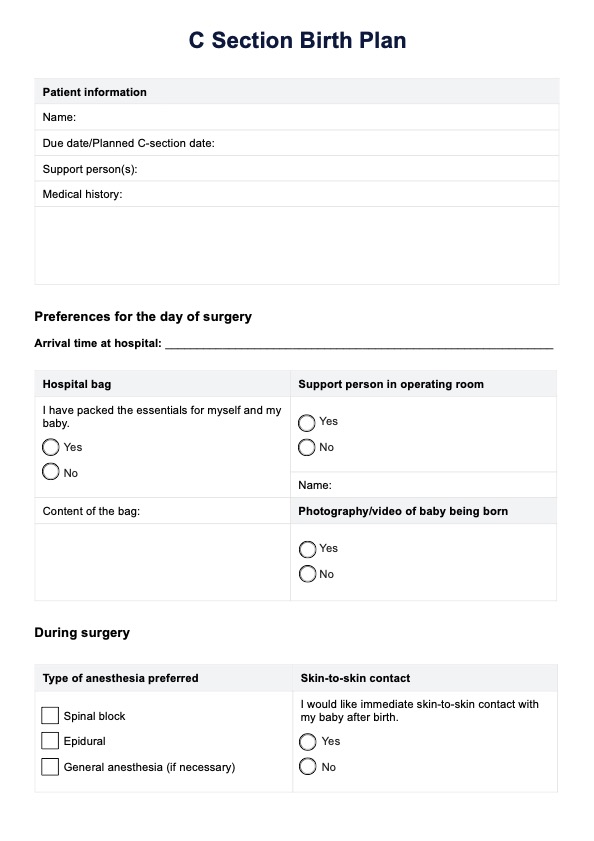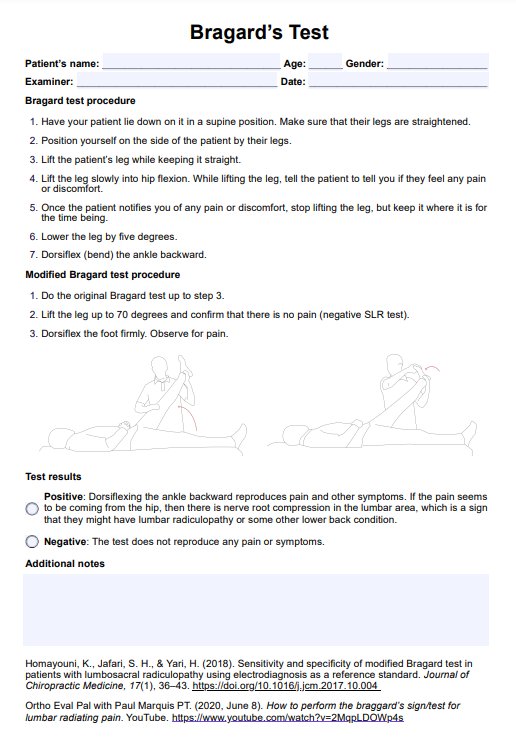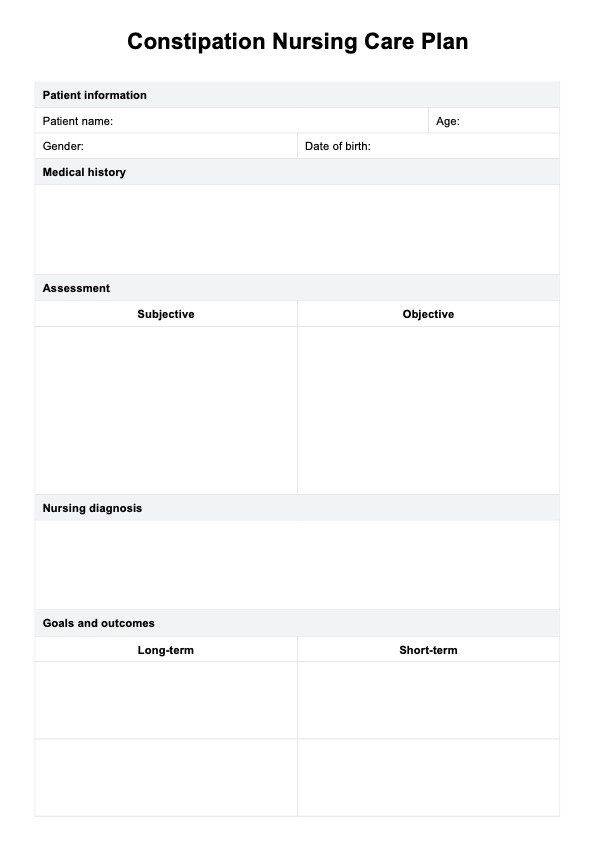Chest Exam
Explore the importance of chest exams and elevate your practice with Carepatron's comprehensive Chest Exam Template. Download your free PDF today!


What Is a Chest Exam?
The ability to listen, understand and interpret the symphony of sounds produced by the human body is a critical skill for any healthcare professional. This symphony takes center stage in diagnosing conditions related to the heart, lungs, and chest. This is where the comes in.
A chest exam, or chest physical examination, is a procedure that involves a detailed assessment of the chest, including the heart and lungs. It's a tool that healthcare providers use to identify any abnormalities or diseases that might be present in these crucial parts of the body.
A thorough chest exam comprises inspection, palpation, percussion, and auscultation. The process often begins with a visual examination, where the healthcare provider observes the patient's chest for any visible signs of disease, such as unusual skin color or abnormal breathing patterns. The practitioner then uses palpation to feel for any unusual lumps or tenderness. Percussion involves tapping the chest and listening for sounds that might indicate a problem, like a lung fluid. Finally, using a stethoscope, auscultation enables the healthcare provider to listen to the heart and lung sounds, detecting any variations that could signal an underlying condition.
These techniques, combined, create a comprehensive picture of the patient's chest health, revealing symptoms and signs that could indicate conditions ranging from lung disease and heart conditions to chest infections and trauma.
Our Free PDF Download will provide you with a structured and systematic template for conducting a Chest Exam, enhancing the accuracy and efficiency of your clinical practice. Grab this opportunity to deepen your understanding and refine your chest exam technique as you journey through this guide.
Chest Exam Template
Chest Exam Example
How Does It Work?
Chest exams are invaluable for detecting and diagnosing chest diseases and conditions in healthcare. It may seem daunting initially, but the process becomes relatively straightforward with the proper guidance and resources, such as our comprehensive chest exam template. Let's break down the steps involved in conducting a chest exam.
Step 1: Patient Information Gathering
The first step is to collect basic patient information, including their name, age, gender, and exam date. This information is vital as it helps set the context for the assessment and allows for proper documentation and tracking of the patient's health status.
Step 2: Inspection
Next, start the physical examination with an inspection of the patient's chest. Check for the symmetry of the chest wall, the patient's skin color and condition, breathing pattern, and the presence of any scars or lesions.
Step 3: Palpation
Once the inspection has been done, move on to palpation. Here, you'll check for any chest wall tenderness and the position of the trachea and assess chest expansion. This can provide insight into possible injuries or obstructions in the respiratory tract.
Step 4: Percussion
Next is percussion, a phase where you'll check for resonance, dullness, and hyper resonance in the patient's chest. The sounds heard can help identify underlying conditions, such as fluid accumulation in the lungs.
Step 5: Auscultation
Lastly, the exam concludes with auscultation. Here, you're listening for breath and heart sounds, critical indicators of various heart and lung conditions.
Step 6: Interpretation
After completing all the steps, interpret the findings and make a preliminary impression of the patient's condition. If there are any abnormal findings, further diagnostic testing may be needed.
In conclusion, conducting a chest exam is a systematic process that, with practice and the right tools, like our chest exam template, any healthcare professional can master. Remember, a successful chest exam requires medical knowledge and a meticulous approach to each patient. So, why wait? Download our Printable Chest Exam Template today and elevate your healthcare practice to new heights.
When Would You Use This Chest Exam Template?
Chest exams are essential in a multitude of situations for a variety of healthcare practitioners. Let's delve into some of the instances where our Chest Exam Template would come in handy:
During Regular Check-ups
Our Chest Exam Template is an excellent tool for general practitioners and family physicians during regular check-ups, primarily if a patient reports respiratory symptoms like shortness of breath, persistent cough, or chest pain.
In Hospital Settings
Our template is also incredibly useful in hospital settings. Pulmonologists, critical care specialists, and hospitalists can use this to conduct initial assessments or monitor patients' progress with chronic respiratory conditions.
In Emergency Situations
In the fast-paced environment of an emergency room, having a structured template like ours can help streamline the process of conducting chest exams, allowing for quick identification of any chest or lung-related emergencies.
Specialty Clinics
In specialty clinics like cardiology or pulmonology, where issues related to the chest are a primary concern, our template can provide a standardized method for conducting thorough exams.
In conclusion, our Chest Exam Template is a versatile resource that caters to a wide range of healthcare professionals across various settings. It simplifies the process of conducting chest exams while ensuring that no critical aspect is overlooked. Ready to enhance your medical practice? Download our Chest Exam Template today!
Research & Evidence
Chest exams have been a cornerstone in medical practice for centuries, dating back to Hippocrates' time. Even with modern medical advancements, chest exams remain a fundamental tool in assessing the health of a patient's respiratory system.
The value of chest exams is well-documented in the medical literature. A study in the 'New England Journal of Medicine' highlighted the importance of chest examinations in accurately diagnosing lung diseases, mainly when used alongside radiographic results. Another study in the 'American Journal of Medicine' emphasized that physical examinations, including chest exams, can change the management plan in about 26% of patients. This illustrates how critical chest exams are in determining the best care for a patient.
Further, research from the 'American Journal of Respiratory and Critical Care Medicine' suggests that integrating comprehensive chest examinations with other diagnostic tests enhances the accuracy of diagnosing lung diseases. All these studies underscore the significance of structured chest exams in facilitating effective patient care.
References
- Wipf, J.E., Lipsky, B.A., Hirschmann, J.V., Boyko, E.J., Inui, T.S., Carter, W.B., & Osborne, M.L. (1995). Diagnosing pneumonia by physical examination: Relevant or relic? Archives of Internal Medicine, 155(16), 1741–1745.
- Verghese, A., Charlton, B., Kassirer, J. P., Ramsey, M., & Ioannidis, J. P. (2015). Inadequacies of physical examination as a cause of medical errors and adverse events: a collection of vignettes. The American journal of medicine, 128(12), 1322–1324.e3.
- McGee, S. (2012). A piece of my mind. A piece of my mind. Evidence for physical examination. JAMA, 308(14), 1433–1434.
Commonly asked questions
Yes, the Chest Exam Template is designed to be versatile, making it suitable for general practitioners, pulmonologists, and other healthcare professionals who need to conduct chest exams.
Absolutely! The PDF is designed for printing for physical records and digital input using Carepatron's Chest Exam Software, providing flexibility for your preferred record-keeping method.
The Carepatron Chest Exam App streamlines your workflow by reducing paperwork, securely storing patient data, and allowing access across multiple devices, leaving you more time for patient care.


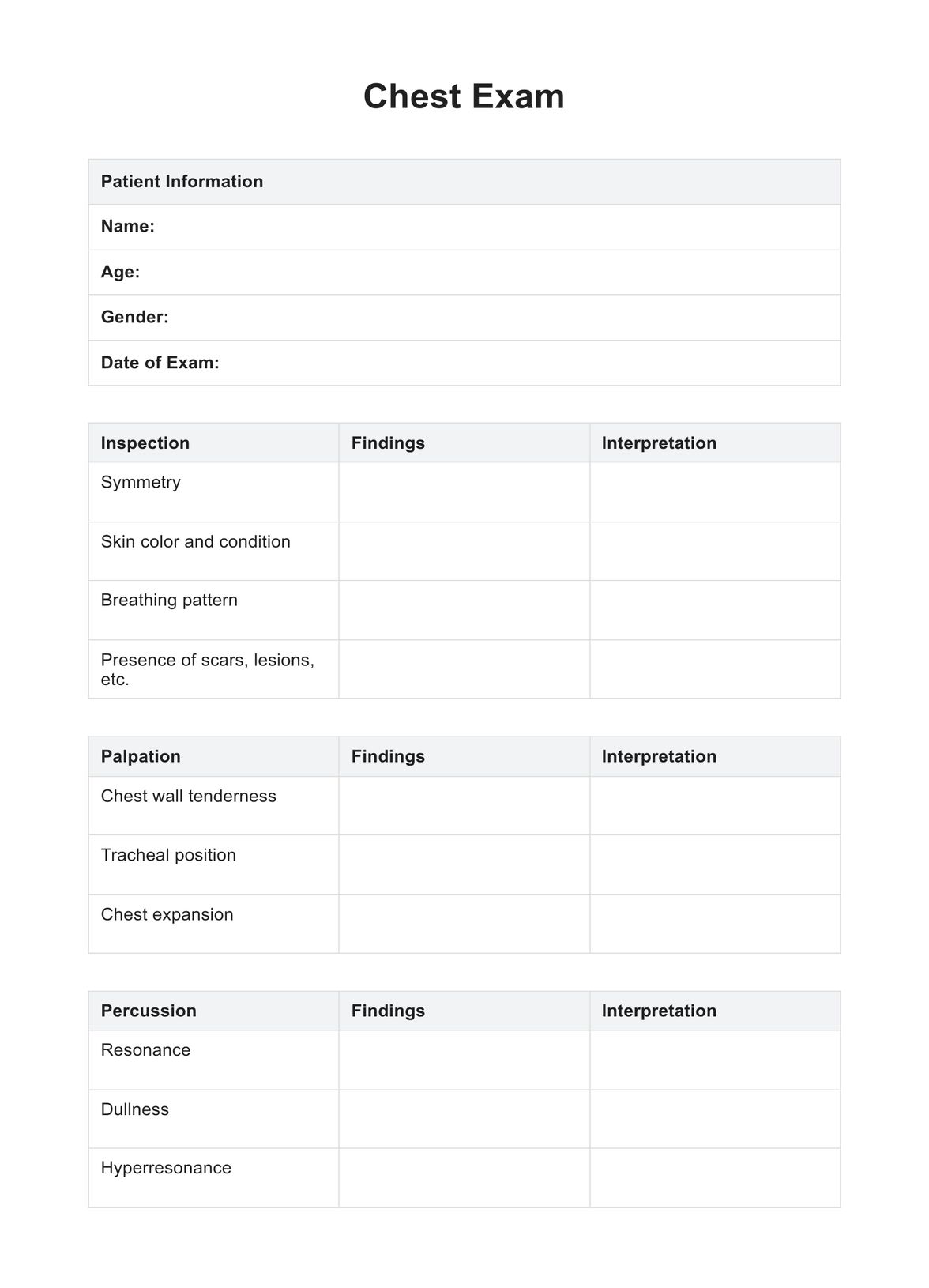
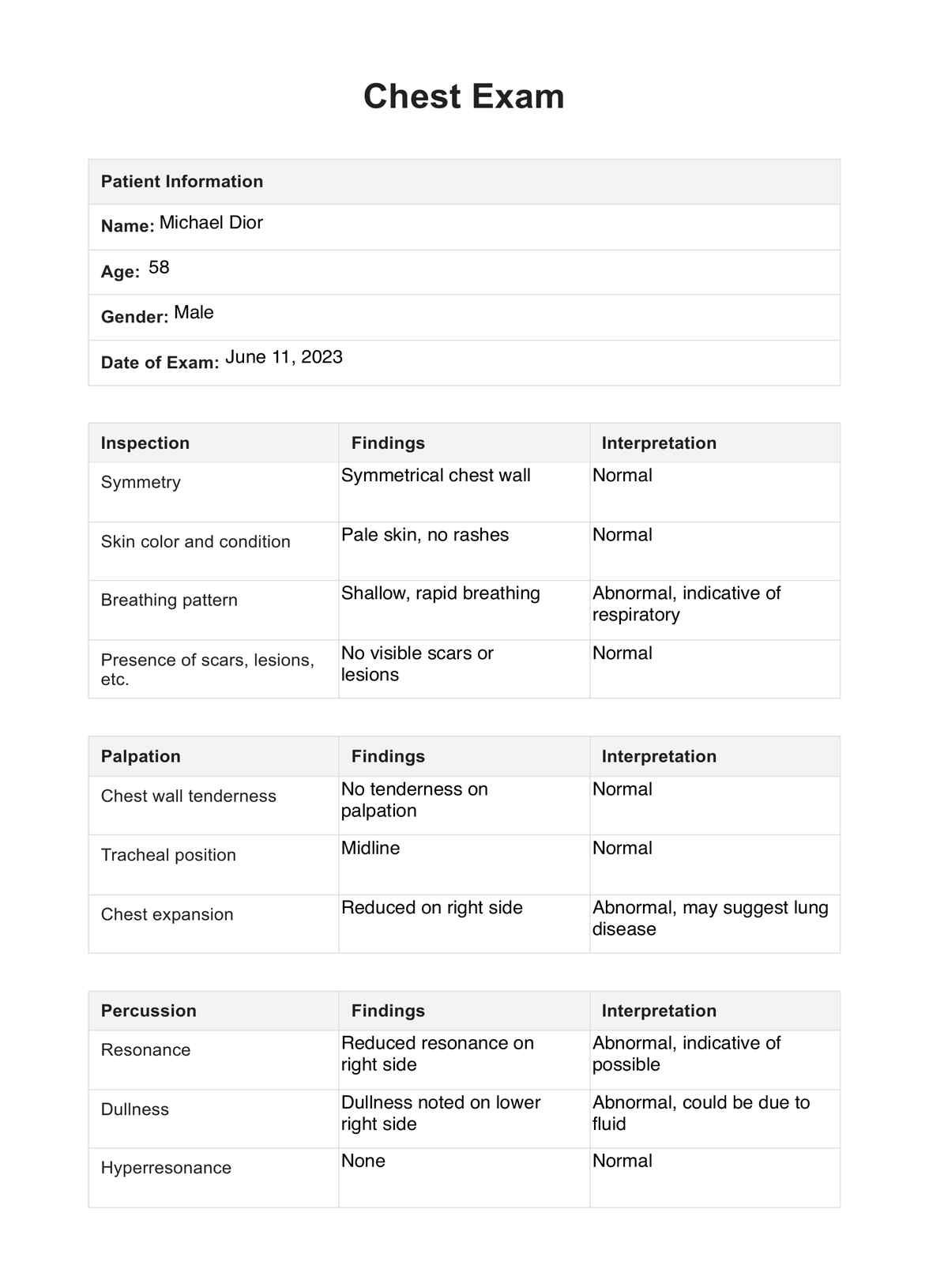











-template.jpg)
























































































